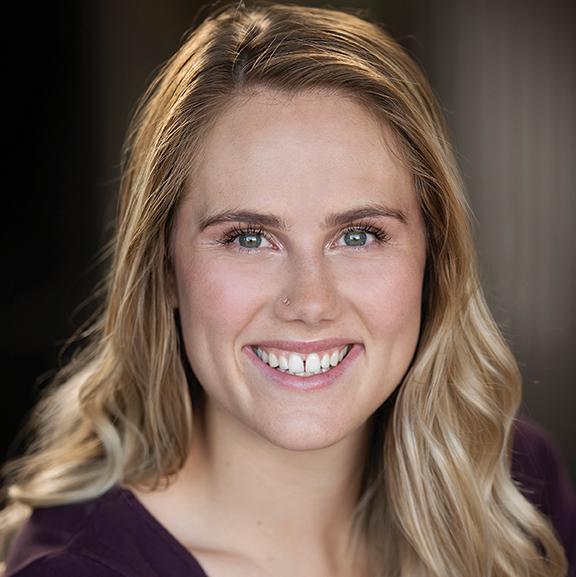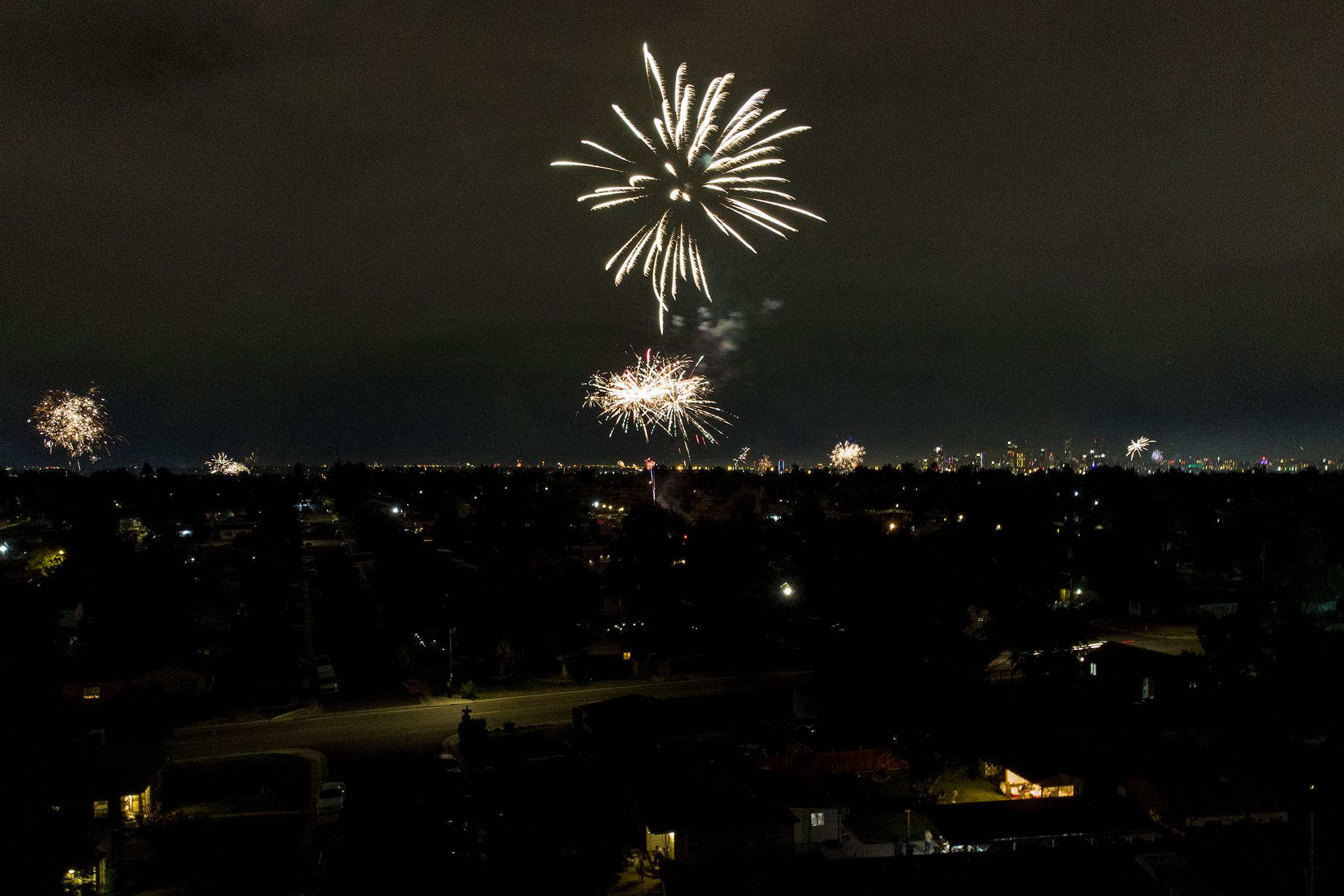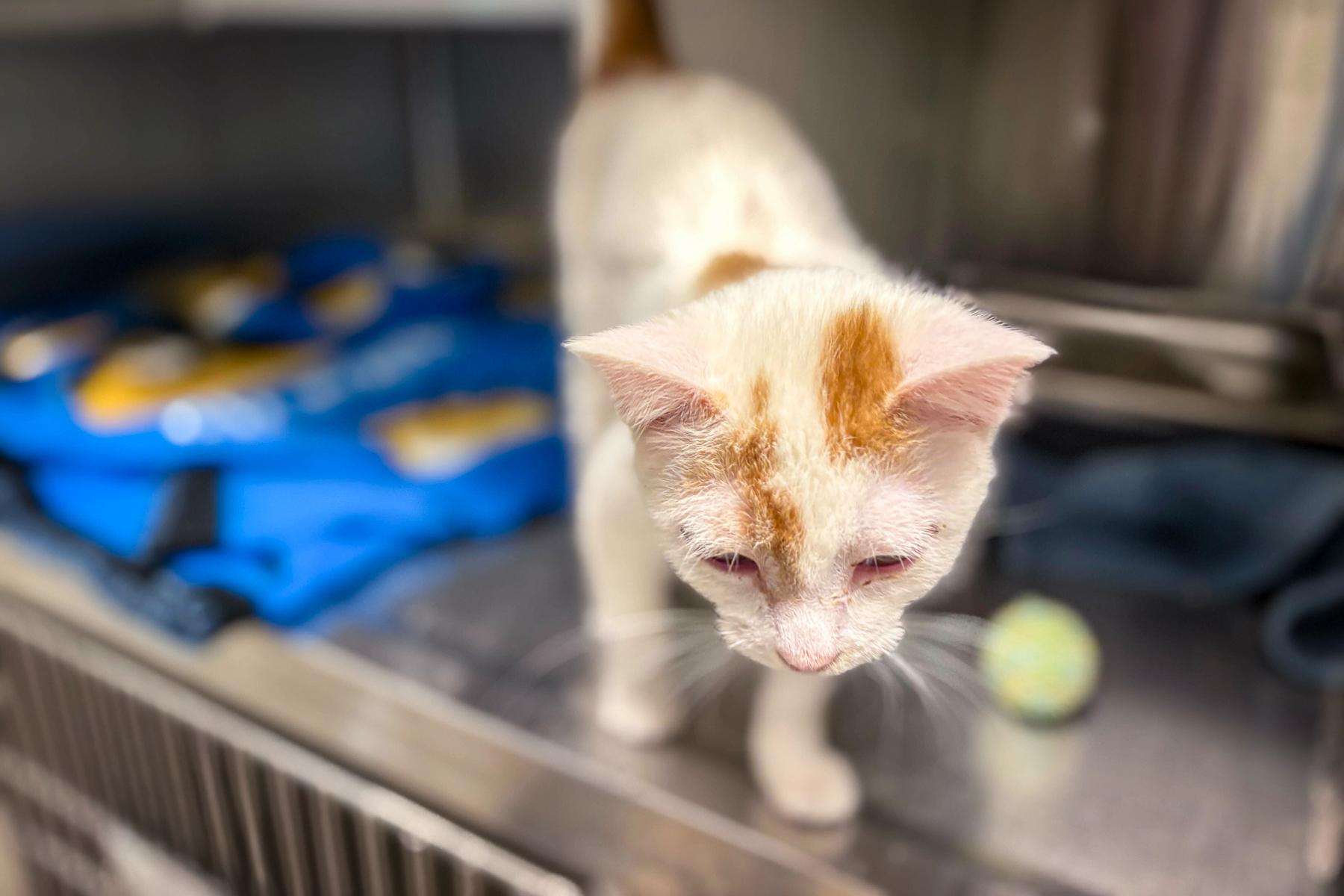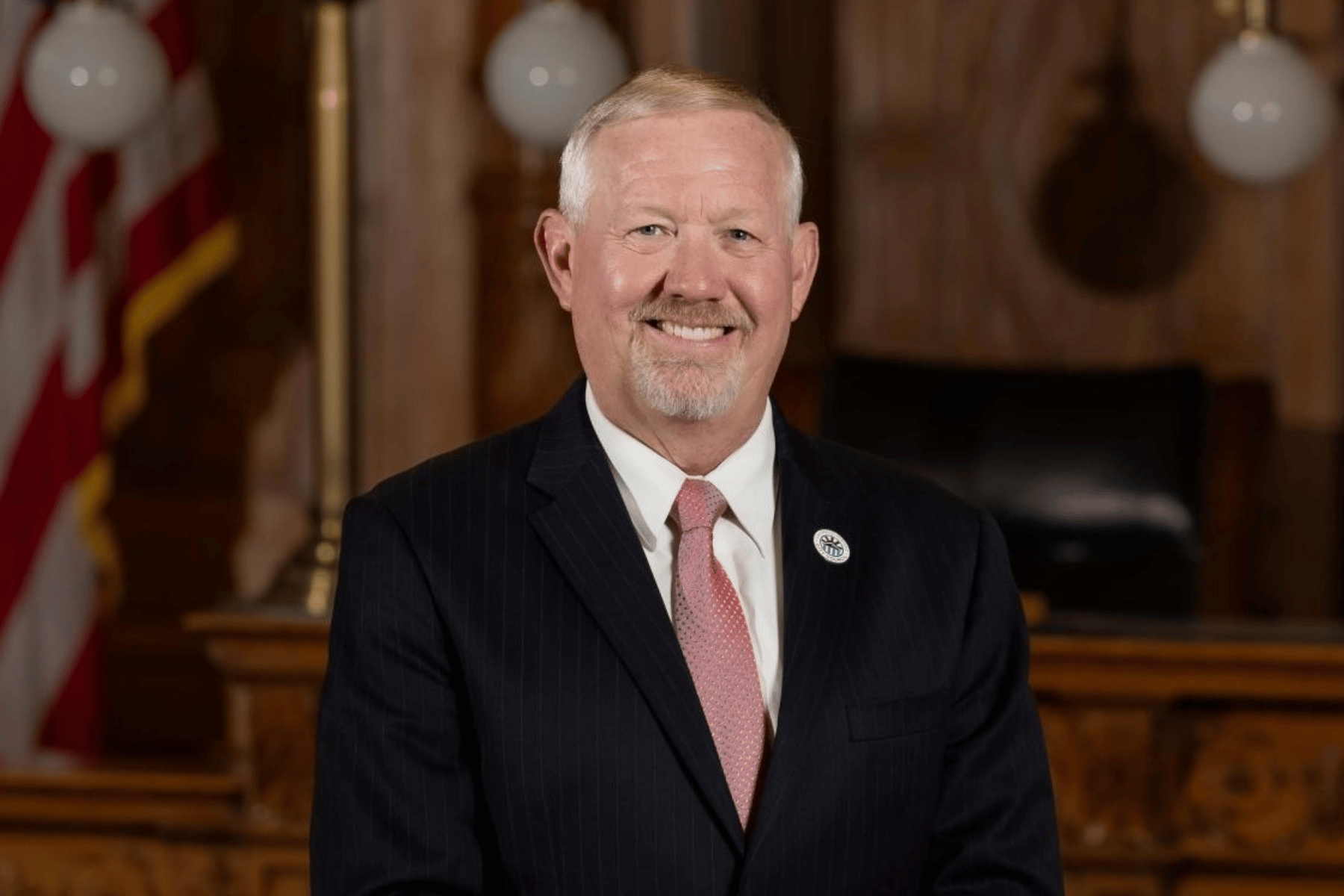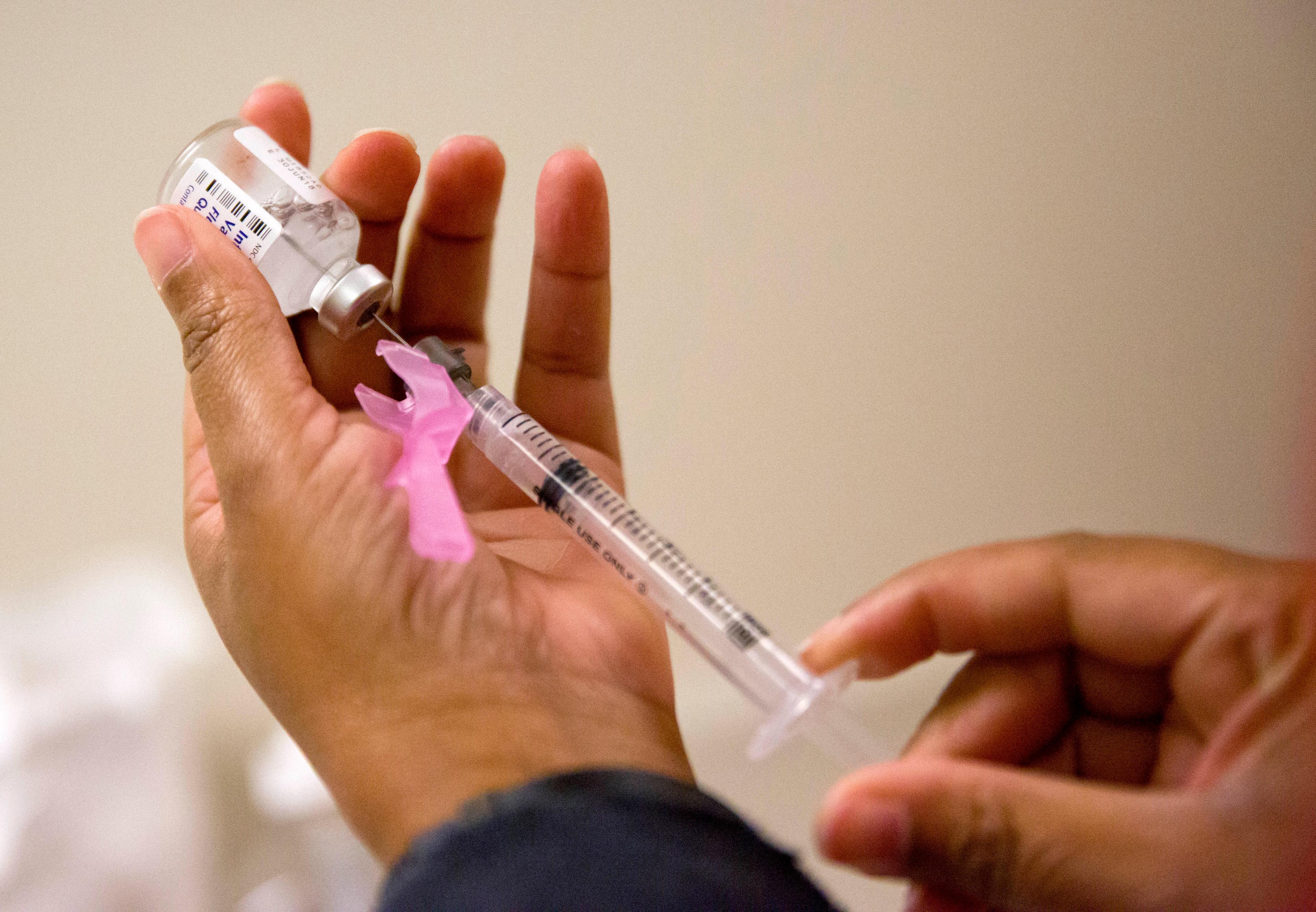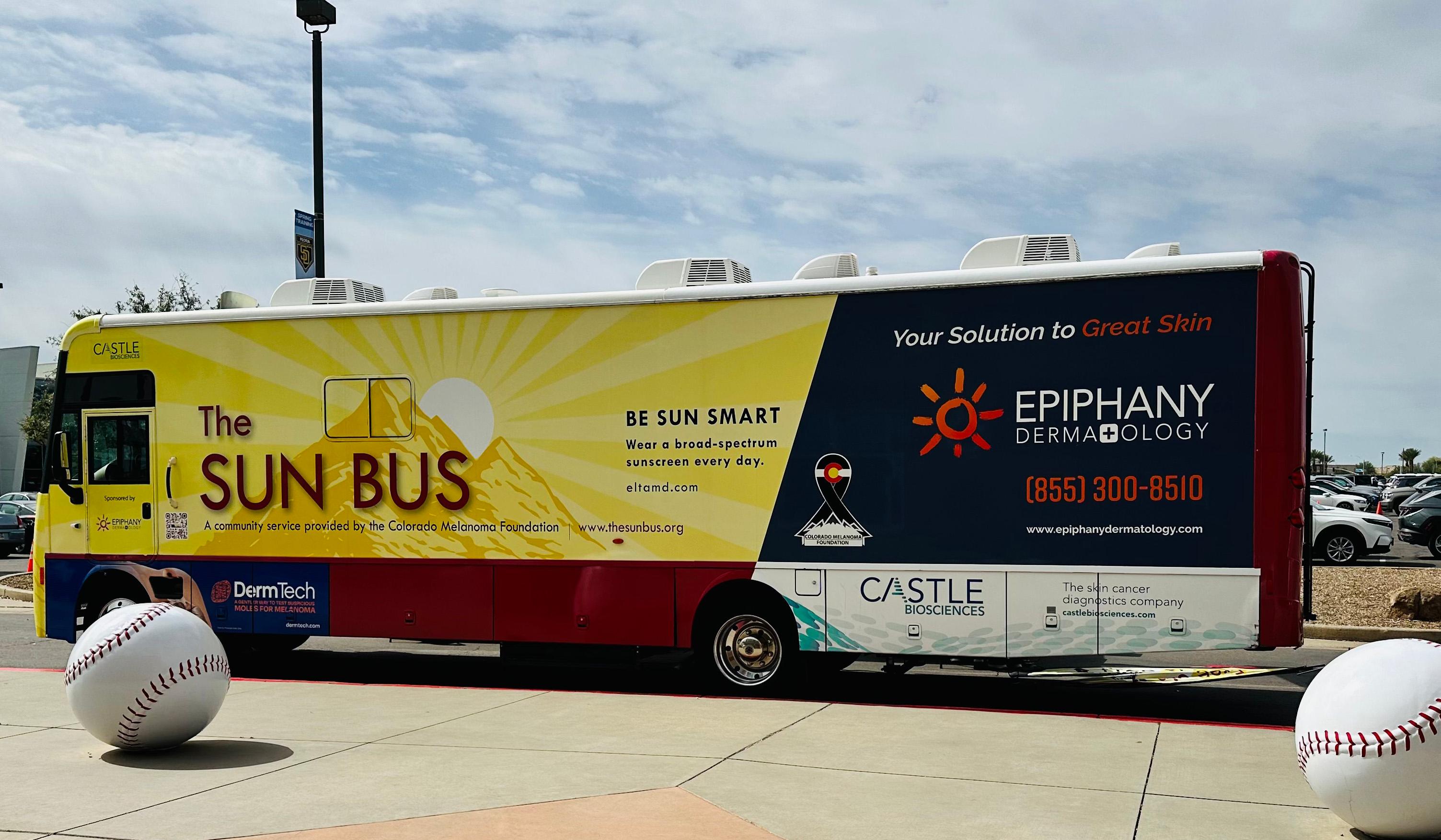
This year, 1,990 Coloradans are expected to be diagnosed with skin cancer, and about 160 people will die from skin cancer, according to the American Cancer Society. A mobile clinic — the Sun Bus — is trying to turn those numbers around by offering free skin checks and sun education.
“What a bus does for you is it allows you to get out into the community where people are,” said Neil Box, cofounder of The Sun Bus and president of the Colorado Melanoma Foundation. “Seventy percent of the population are not under the care of a dermatologist. And so also there's a lot of lesions on people that are not getting screened.”
The Sun Bus travels around Colorado to big events and festivals to offer free skin checks and education. Participants enter the bus and undergo a skin check by a dermatologist in one of two exam rooms. If the examiner sees something suspicious, they then connect the participant with a local dermatology clinic or offer further education on where they can go to get treated. Participants leave with sunscreen samples, sun exposure and skin cancer educational materials and a better understanding of their skin’s damage from the sun.
Reluctance to visiting a dermatologist
The Sun Bus started in 2018 after the Colorado Melanoma Foundation raised funds to purchase the bus. The bus is now supported by donations from organizations like Epiphany Dermatology, Castle Biosciences and EltaMD, among others.
In addition to skin checks and education, The Sun Bus also conducts research. In one of their surveys, they found that people are reluctant to go to the dermatologist even if they are covered through insurance.
“This opened the opportunity for us to interact with each [person] on a personal level, make it a friendly and inviting environment for them and get over that first fear of getting that visit to a dermatologist,” said Tamara Terzian, executive director of The Sun Bus.
Since 2021, The Sun Bus has expanded its reach and started traveling to surrounding states.
Why is Colorado’s skin cancer rate so high?
In Colorado, 2.5 people per every 100,000 residents die of skin cancer every year. That’s higher than the national average of 2, and is higher than most other states in the country.
Coloradans are exposed to an excessive amount of Ultraviolet Radiation, according to The Colorado Melanoma Foundation, because of Colorado’s elevation, 300 plus days of sunshine and its residents' love of the outdoors.
But I thought skin cancer wasn’t a big deal?
There are a lot of misconceptions about sun exposure and skin cancer.
“‘Hey, when I'm skiing, it's wintertime where it's cloudy out. I don't need sunscreen.’ Guess what? Because of the altitude, you're getting more sun on Vail Mountain than you are at Miami Beach,” said Dr. Aaron Farberg, a dermatologist in Dallas, who specializes in skin cancer. “So you better believe you need sunscreen and protection during that time, too.”
Farberg said he often hears people talk about needing a “base tan” before going on vacation or not worrying so much about the spots they notice on their skin because they don’t think skin cancer is as dangerous as other cancers.
The most deadly type of skin cancer is melanoma, which occurs in the melanocytes or cells that give skin its color. Melanoma is estimated to kill more than 8,000 people in the U.S. this year.
“This is when you hear about 20- and 30-year-olds, oh my gosh, they died,” Farberg said. “It's a multifactorial as to what causes it, but we know UV radiation is a key driver. Of course genetics plays a part in this as well, but at the end of the day, I mean skin cancer is real.”
There are also misconceptions about treatment, which Terzian said she has experienced first hand on The Bus.
Back in 2019, she met a participant who was convinced cannabis could cure skin cancer.
“I had to go through what melanomas cancers mean and how they are generated and developed. And then what type of treatments are available and about the myth of marijuana fixing certain diseases,” she said. “ It was for me what's going on in certain people's minds.”
How can I identify something concerning on my skin?
Use the ABCDE rule of melanoma if you're worried about a dark spot or a mole on your skin:
- A for Asymmetry: One half of the mole or skin lesion doesn't match the other
- B for Border: The edges are irregular, notched, ragged, or blurred
- C for Color: The mole has uneven color, multiple colors, or changes in color
- D for Diameter: The mole is larger than 1/4 inch, or the size of a pencil eraser
- E for Evolving: The mole has changed in size, shape, color, or height over the past few weeks or months
The ABCDE rule is a good way to identify potentially concerning spots, but Farberg also tells his patients to get regular skin checks, just as they would get regular check ups from their dentist or primary care doctor.
The Sun Bus’s next stops in Colorado are June 5 in Arvada and June 8-9 in Fort Collins.
